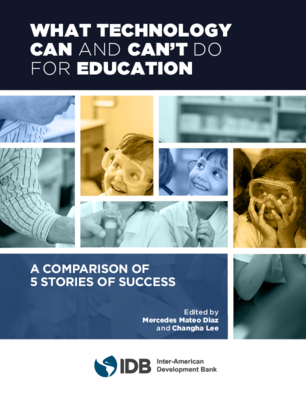What Technology Can and Can't Do for Education: A Comparison of 5 Stories of Success
Date
Jun 2020
EDITOR
Mateo-Berganza Díaz, María Mercedes; Lee, Changha
As a consequence of the rapid spread of COVID-19, the entire world is suddenly engaged in the biggest distance learning experiment in history. In Latin America and the Caribbean, radio and TV have been the most common technologies used to reach students and deliver education. Technology is a powerful tool, if not the only tool to ensure the continuity of learning during a time of emergency. But technology is not a panacea to all problems education systems encounter. Only a few educational systems have been able to leverage technology to improve learning and better respond to the potential learning loss during the pandemic. No country prepared for this crisis, but some seemed to experience less damage than others. Why? What can other countries learn from them? This book examines transforming education for the new normal and the systematic changes it requires. It looks at systems in which technology is plugged in as part of a whole. It presents successful cases of Finland, Korea, Uruguay, United States, and Estonia and discusses the enabling factors. The book's chapters illustrate through different experiences and pathways that transforming education is not just about bringing in technology. It is about adopting a new vision and making the systems more flexible and adaptable to new circumstances.




